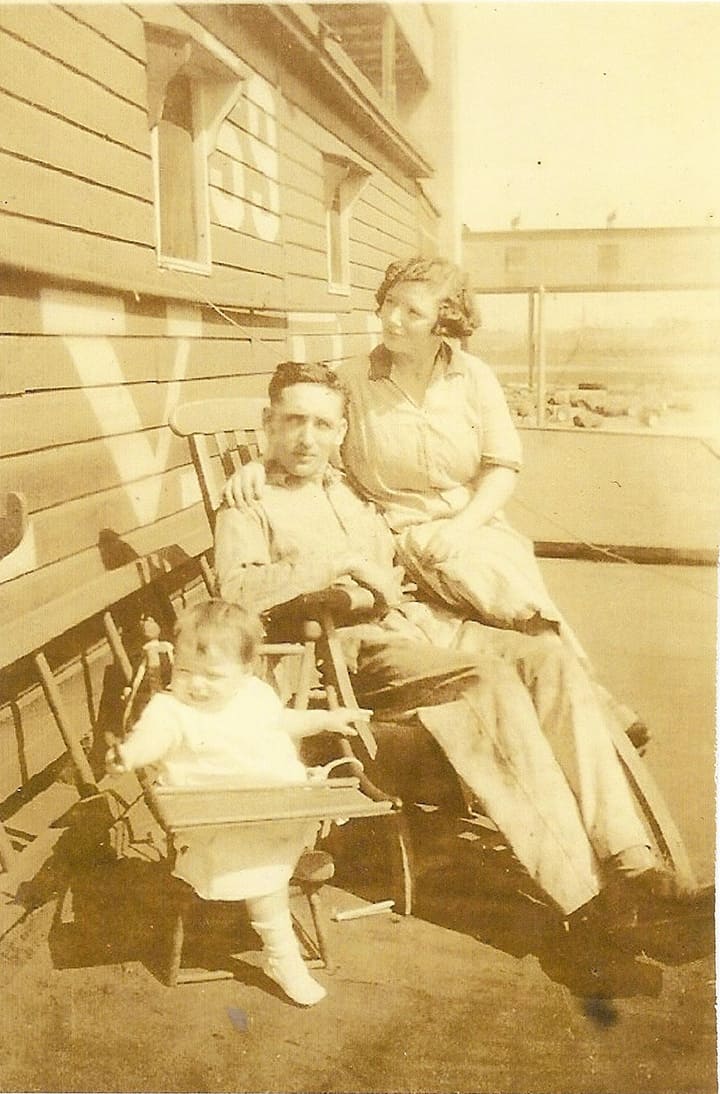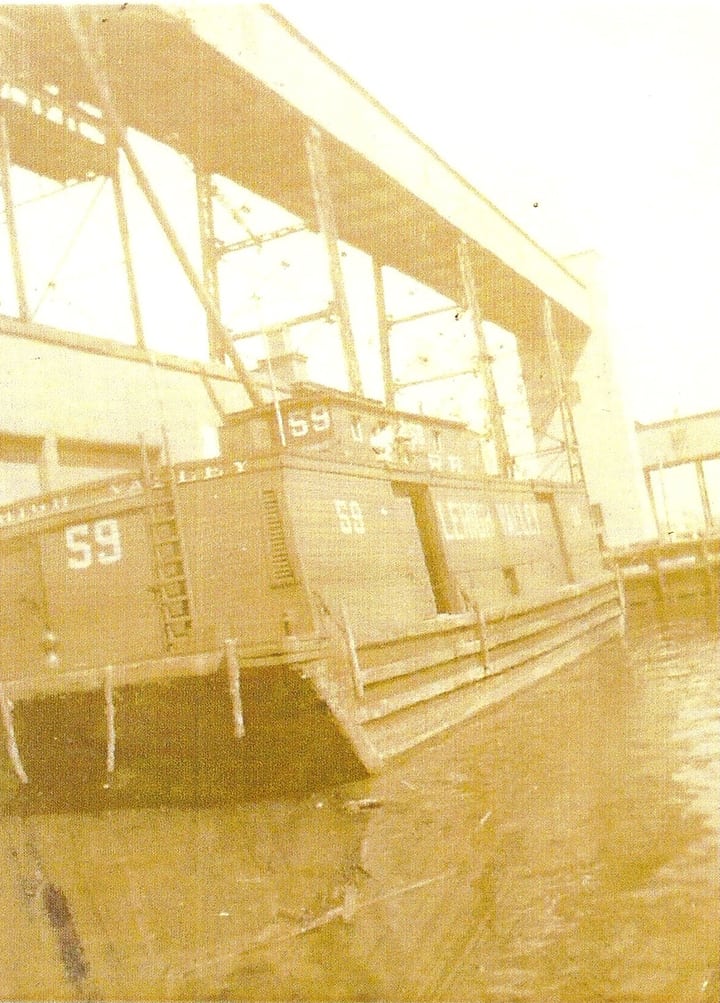
Lehigh Valley Barge #79 is a spectacular site for a brief waterfront visit. Now, try to imagine growing up there.
Imagine waking up in the morning to find your house in a different state, hauling buckets of water on board to do your laundry, or transporting your mother to the hospital by sea so that she can give birth to your sibling.
That was the reality of Alice Scanlan and her sister Josephine Myers during the 1920s and 30s. For about a decade, the sisters – along with their parents and three other siblings – called Lehigh Valley Barges #59 and #308 their homes.
Scanlan, now 91, and Myers, 84, will be honored during the Waterfront Museum Pirate Ball on May 15 because of their fascinating past aboard a similar barge.
“They are living examples of what the barge is all about, and of a life that is no longer in existence,” said David Sharps, captain of the Lehigh Valley #79 and president of the Waterfront Museum. “[The sisters] represent a bygone era of transportation and commerce history.”
The second annual Pirate Ball is a farewell party to #79. The barge – the only surviving all-wooden unit from the sisters’ day – is heading to Waterford, New York for an inspection before returning in September. The party will be a local nautical extravaganza featuring a pirate costume competition, auctions for sailing classes, and food and drink donations from Red Hook businesses including Hometown, Brooklyn Crab, and the Fairway.
Scanlan and Myers will be honored at 8 pm, when they’ll be surprised with a miniature model of their original home. Theirs was green, said Sharps, not the prominent red of the #79.
“When Alice [Scanlan] first came to see the #79, she came yelling at me ‘why is it red? Our barge was green!’” he recalled. “I knew that. Lehigh Valley Railroad switched to the red paint later because it was cheaper.”
The color green is only one of thousands of memories Scanlan holds sacred about her life on the barge. She remembers her father, Joseph McGowan, working dutifully and happily as a captain for Lehigh Valley Railroad. Primarily docked in Jersey City, he navigated hauls all along the Hudson River with many stops along Brooklyn piers. The five kids would do their homework and play right on board alongside him. Every morning, they disembarked and took public transportation to school in downtown Manhattan. Their friends were other Lehigh Valley barge kids.
“There were about 13 or 14 other families with kids around, so we did okay,” she said. “Looking back, I’m sure we were different to the other kids in school. We didn’t think anything of it.”
The McGowans lived on #59 from 1926 to 1930 before moving to a home in Flatbush, Brooklyn. Soon, the Great Depression hit. Moving back to a barge was an opportunity to rent out their property and save it from potential foreclosure. After a year hiatus, the McGowans lived on barge #308 for six more years.
“In those days, so many people were out of work,” Scanlan said. “We were lucky that our dad was not only employed, but he was always around. It was like having a stay-at-home dad in a way.”
Life was primitive on board, however. There was no running water or electricity; only kerosene and a coal stove to keep the entire home warm. Their mother Alice carried pails of water from the main pier and toiled over a galvanized tub. Only three rooms accommodated all seven of them, including their brothers Jimmy and Michael, who were born during the barge years.
“It was hard. When I became a teenager I really wanted a little privacy,” Scanlan said. “But my parents weren’t complainers, so we didn’t grasp how hard it was.”
For Myers, who lived on the barge only up to age seven, life on the sea is a mosaic of children’s memories. She remembers her mother wrapping hot cast irons in towels to warm the children’s feet. She remembers her father tying a rope around her waist and supervising her while she swam. She remembers the day her mother gave birth to her brother Michael: the water was icy (there isn’t ice on the Hudson anymore, she noted); and the family had to sail across a water gap to get their mother to a Jersey City hospital.
“I’m sure life on the barge was difficult for my mother and father,” Myers said. “But to me, it was all novel. I was a kid. I didn’t know from a house or a boat!”
The family moved permanently to their Flatbush home in 1937, though their father continued to work as a barge captain for 30 more years. A riveting chapter in their lives was over, and soon, the Lighterage Era — the era of widespread barge use throughout the Port of New York — would come to a close, too. Starting around 1960, the shipping industry shifted to containers and highways, rendering the barges obsolete.

Sharps remains a champion of the lighterage system, and of preserving stories from the barge heyday.
“They lived in a situation with barely any technology, and yet they were successful,” he said. “Just about everybody’s family was tied to the waterfront and the Port back then. There was even a ‘maritime’ section in the New York Times. It was such a big part of everyday New York life back then, and now, people don’t even mention it.”
Seven years ago, the sisters met Sharps through a mutual connection. They’ve been exchanging photos and memories ever since.
For its 100th Anniversary last year, the Waterfront Museum produced a puppet show called “Out of the Box and Over a Barrel,” which featured a young girl protagonist living on a barge during the Lighterage Era. It was inspired by Scanlan’s story.
Scanlan will be coming in from Gershon, New York for the Pirate Ball on May 15. Myers will be arriving from Nassau County. The sisters are thrilled to visit the only remaining barge that so closely resembles their childhood home.
“To have our history get discovered like this is absolutely wonderful,” said Scanlan. “It has all been truly fascinating for us, and for our families.”
Tickets for the Pirate Ball are available at www.barge100.org.









2 Comments
We were so honored to be part of the Barge 100 Celebration on Friday evening at the Pirate’s Ball. That there is still so much interest in that part of our family history and that era of river transportation is wonderful.
My sister Josephine and I and our families really appreciate all that David and others have done to keep these memories alive.
Thanks too to Halley Bondy for a great story in the paper, for the many photographers who took pictures and to George (owner and publisher) who was there too.